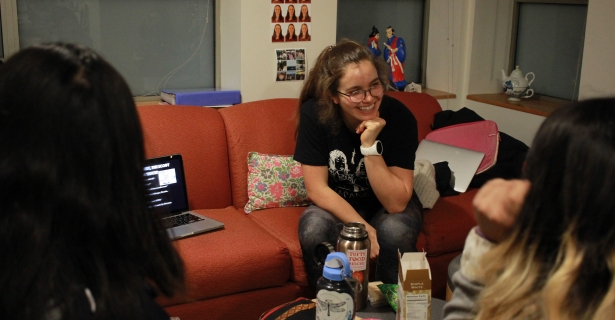Synaptics Scholars organize weekly lightning talks -- brief presentations given by one of the members of the group on a topic of interest. Each week, our meeting begins with a different Synaptic Scholar (a Syn, for short!) giving a five to ten-minute presentation. A lightning talk is an opportunity for Syns to share something they are passionate or curious about, as well as to practice presentation skills in a supportive environment. Last semester, lightning talk topics ranged from the Boston’s history with racism to prison education programs; from the colonial history of Namibia to the significance of costume design in theater. We welcome interjections and questions throughout the talks. And in many cases, lightning talks organically lead us to further, deeper discussion.
My lightning talk last week was about the intriguing, cultural history of kombucha, a fermented tea drink that has become increasingly popular in the United States in recent years. I brew my own kombucha and have enjoyed learning about how it made its way from Manchuria to become a global drink. While its origins are dated to around 220 B.C.E. in northeastern China, kombucha only saw a wave of popularity in the U.S. in the 1990s, especially among communities affected by HIV and AIDS and other serious medical conditions. Throughout its modern history, many health benefits have been attributed to kombucha by its supporters. Writer Mayukh Sen states that, for this population, “Kombucha was a folk remedy that presented an ideal sanctuary from the snare of Western medicine.”
Historically, it began as a home-brewed product, shared at the local level. It made its way from China to Japan and then other parts of Asia, followed by Europe, and eventually to the U.S. The brewing process involves using a SCOBY (a Symbiotic Colony Of Bacteria and Yeast), a flat disc of what some describe as “the coral reef of the bacteria and yeast world”, as well as a double fermentation process. For most of its history, kombucha was not sold in stores.
Kombucha may be likened to what anthropologist Anna Tsing wrote in her excellent essay on wild mushroom collecting, “Commercial mushroom collecting allows us to see the seams of global capitalism. Not only are places differentiated and products specific; forms of knowledge and resource management are wildly divergent and only tentatively connected in the mushroom commodity chain” (YEAR (?). Though this is about mushrooms, I find that it rings true for kombucha, too—the outcome of the kombucha is at the whims of the environment and the SCOBY (and often, I might add, the SCOBY is referred to as a tea mushroom!).
However, in recent decades, there has been a phenomenal rise in kombucha’s popularity—thanks to brands such as GT Dave’s—and the growth of health food stores and places like Whole Foods. For me, this begged the question: in our increasingly connected and industrial world, can any food item resist commodification?

